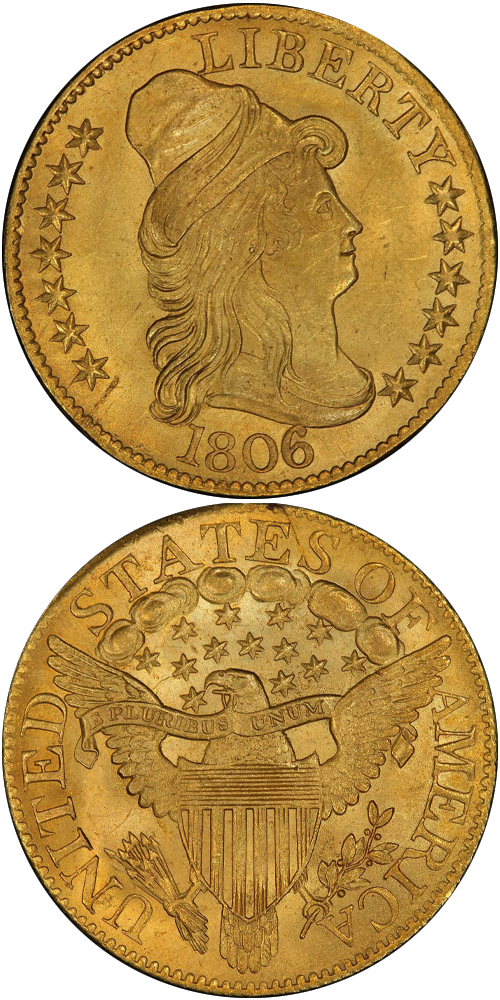1806 Capped Bust Right Half Eagle
Knobbed 6
The year 1806 saw the return of the Lewis and Clark Expedition to the East and the beginning of Zebulon Pike's second exploration of the Rocky Mountains, describing the Colorado peak that would soon bear his name. As the still young nation's economy grew, so too did the need for a robust monetary supply. The production of precious metal coins at the Philadelphia Mint was dependent on bullion deposits. One gold coin stood out above the rest in terms of everyday utility, the half eagle. Of the initial three gold denominations authorized, it was only the half eagle that was in such demand that it was struck almost continuously with only a few interruptions throughout the 19th century. Production of half eagles trended upwards from the earliest days and this was the case in 1806. The 64,093 half eagle minted in 1806 dwarf the roughly 1,600 quarter eagles struck the same year (gold eagle production had been suspended two years earlier).
To accommodate the increased output, five obverse dies and six reverse dies were paired together in six different combinations. The five Pointed Top 6 die marriages combined only managed to produce 9,676 half eagles, a paltry showing for so many dies. However, the solitary Round-Top 6 pair proved to be remarkably resilient: an astonishing 54,417 coins were produced from this one die marriage. Why was there such a large difference in die life between these two varieties? An exhaustive examination by John Dannreuther revealed that the coiner switched the obverse die to the anvil position on the base of the coining press, and placed the reverse die in the role of the hammer die. The coiner found that by doing so, he could achieve a dramatic improvement in die life as well as impart a much sharper and crisper strike. This improvement aided future half eagle production and mintage numbers remained reasonably high.
In the 1820s and 1830s, speculation in gold led to large scale exports of gold coins abroad, only to be melted down at a profit. Many of the earliest American gold coins ended up in these melts and the 1806 half eagle is no exception. Fortunately, enough survived the speculator's crucibles, leaving between 600 and 900 examples of the BD-6 variety. Fully one-third of all known examples have been preserved at the Mint State level, but generally at the lowest tiers. Choice Mint State specimens can be found but only with persistence and determination. Because of its availability, the 1806 Round-Top 6 half eagle has long been popular for inclusion in type collections. Even with a reasonably solid quantity of higher-grade pieces available, demand has always outstripped supply.
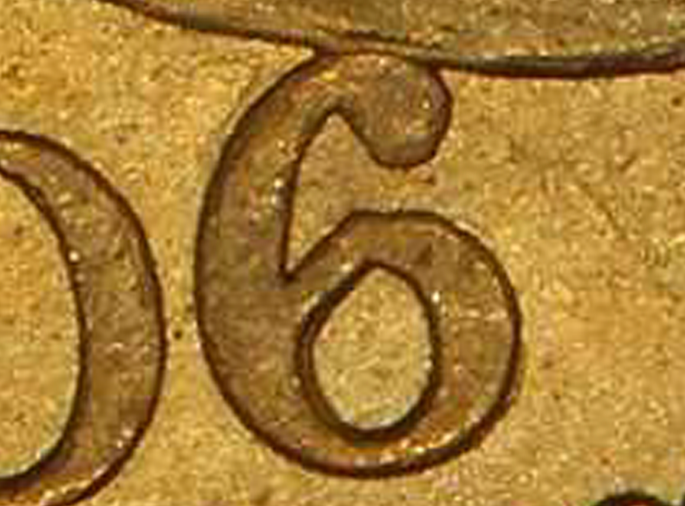 Half Eagle |  Half Eagle |
The example to the left was sold by Stack's Bowers Galleries in the D. Brent Pogue Part II Auction, where it realized $102,812.
1806 Knobbed 6 Capped Bust Half Eagle Auction Highlights
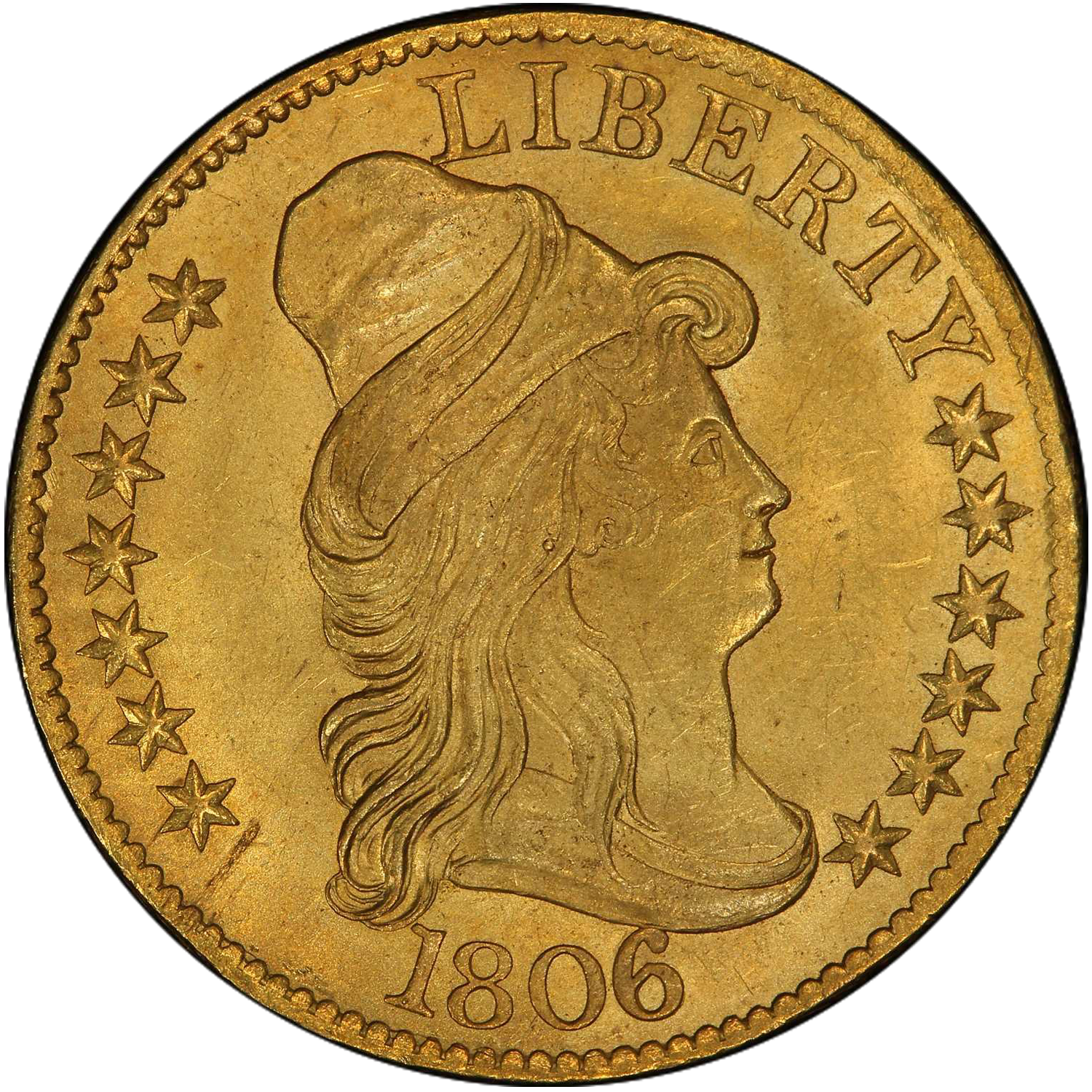 Capped Bust Right Half Eagle PCGS MS-65 Sold for $102,812 View Lot 2088 | 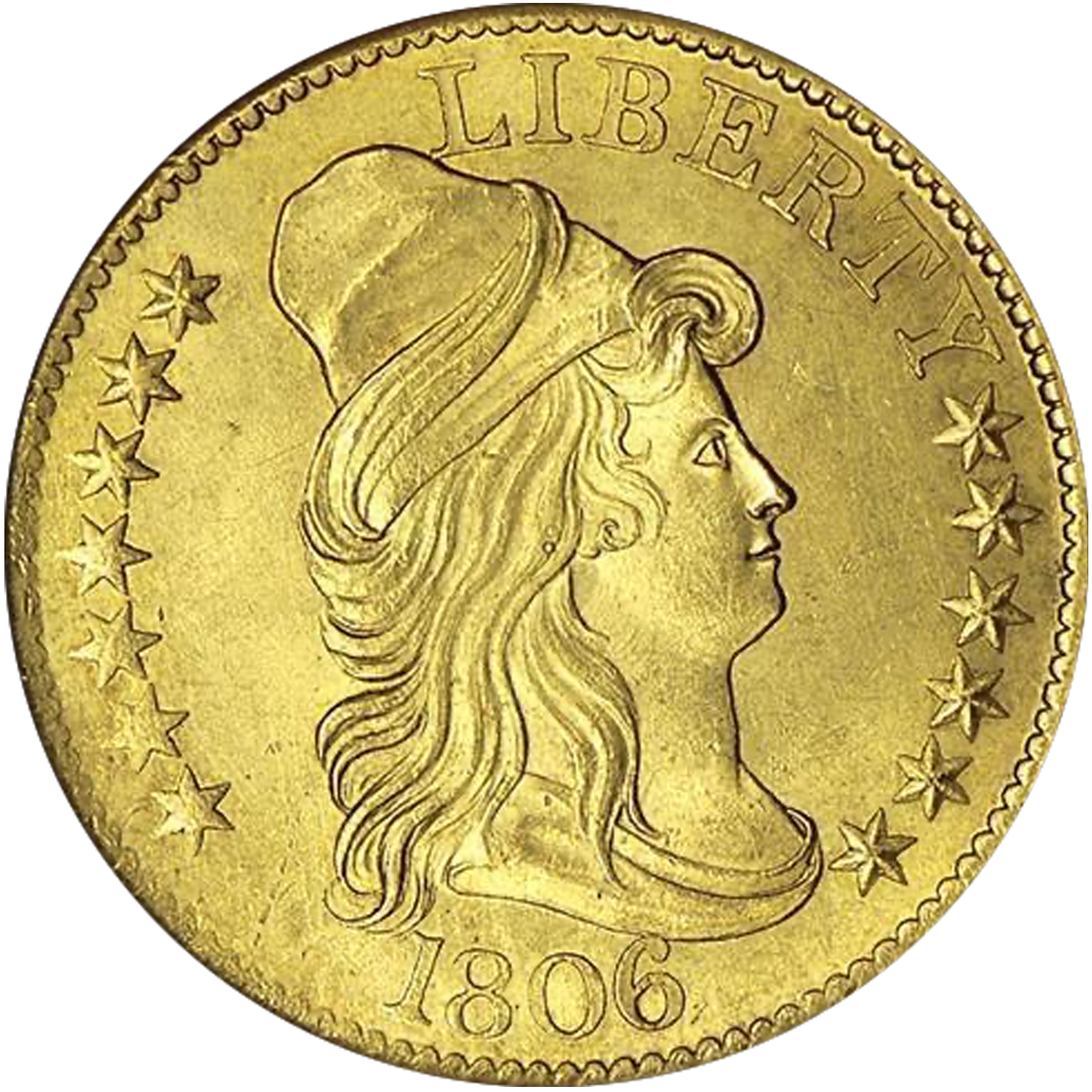 Capped Bust Right Half Eagle NGC MS-64, CAC Sold for $83,375 View Lot 2424 | 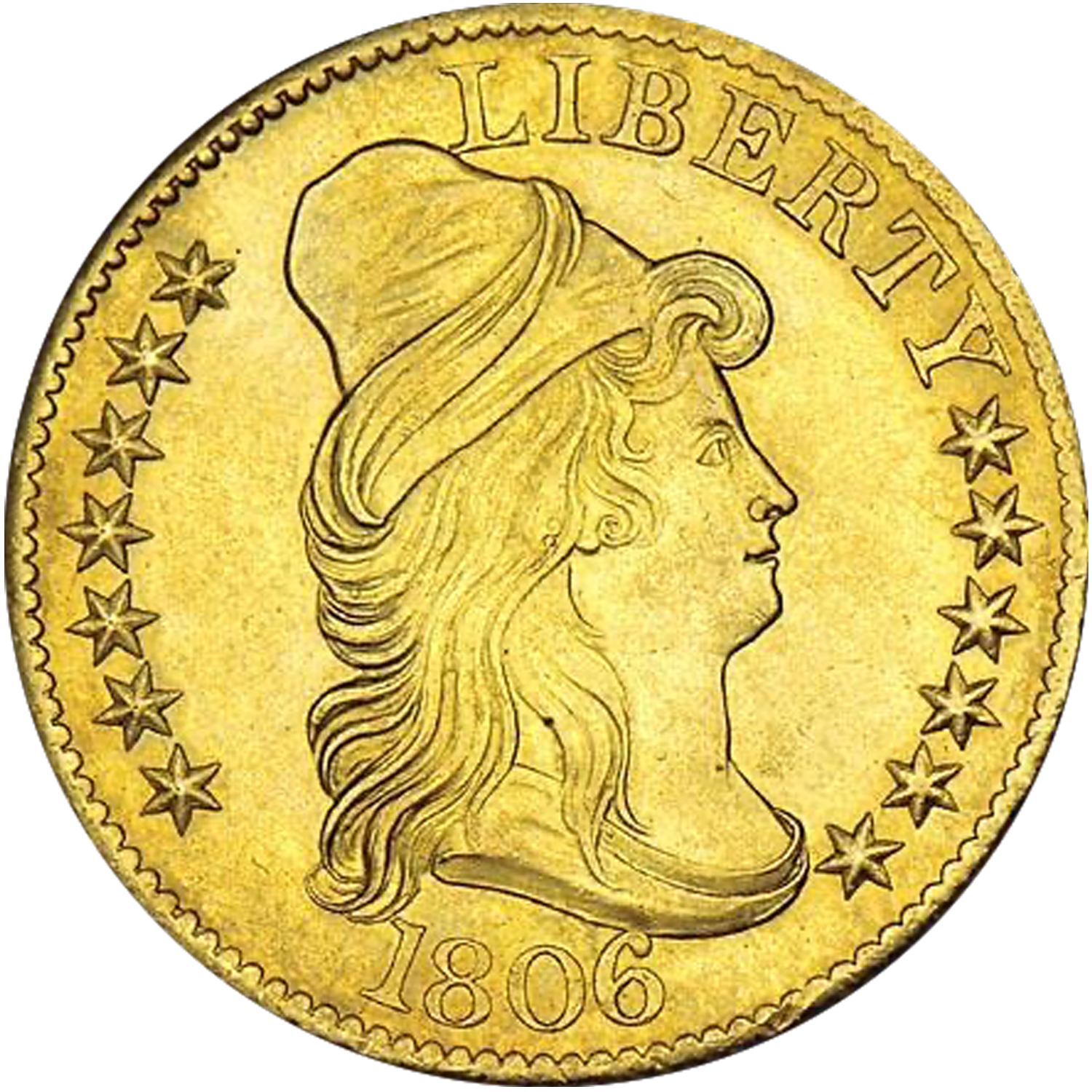 Capped Bust Right Half Eagle PCGS MS-63 Sold for $57,500 View Lot 675 |
